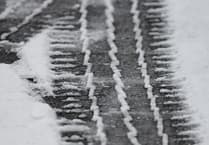For the first time in more than 80 years, Manx residents have returned to an Isle of Man Steam Packet Company ship that was lost during World War II.
A group of local divers from Discover Diving made a trip to the wreck of Mona’s Queen III, completing a five-year project to revisit the former pride of the Manx fleet.
Having been one of the most modern and prestigious vessels in the company’s service, the Mona’s Queen was requisitioned by the Royal Navy in 1939 during ‘Britain’s darkest hour’.
She went on to serve during the evacuation of Dunkirk until she hit a mine in the early hours of May 29, 1940 and sank with the loss of 24 crew.
The dive was initially planned to take place in 2020 to commemorate the 80th memorial of the loss off Dunkirk.
However, due to travel restrictions during the Covid-19 pandemic, the trip was postponed indefinitely.
Two other Packet vessels were also lost at Dunkirk – the remains of King Orry (which lie in the main channel into Dunkirk harbour) and Fenella (which lie close to the East Mole and the shore) have been largely broken up, but the team visited the sites as close as they could.
Mona’s Queen remains substantially complete and largely undisturbed, according to the Steam Packet.
Over the course of the operations to evacuate soldiers from France, Packet vessels brought off about 25,000 servicemen of various nationalities, and SS Viking assisted in the evacuation of civilians from the Northern ports of France and the Channel Islands in the face of the German invasion.
Steam Packet managing director Brian Thomson said: ‘Dunkirk has been described as the finest hour of the company.
‘Certainly it is testament to the important role the Steam Packet Company has played not just in the history of the Isle of Man but that of the wider British Isles too.
‘The 2020 expedition to commemorate the 80th anniversary of the loss of the three vessels was hit by the global pandemic, another example of when the Steam Packet Company has stepped up to maintain vital lifeline services in the face of times of threat.
‘We were happy to help Discover Diving’s expedition – our links to the people and port of Dunkirk were forged in the heat of battle and a moment of great peril for all of Europe, maintaining them in times of peace gives us a chance to reflect on the great sacrifices that were asked of everyone in those times.’
A memorial plaque was carried to the wreck and was made by the Steam Packet workshop using the original moulding from one of the lifeboat logos.
The dive team travelled to Dover to meet their charter boat with the intention of spending five days of diving on the wreck.
The weather and tidal conditions made for challenging circumstances and high winds in the Channel eventually required the mission to be cut short.
The images captured in the dives on the wreck will form part of an exhibition running for two weeks around the anniversary this year.
They will also contribute to a book that tells the story of the Mona’s Queen from her design, build and launch to her passenger service, wartime service and loss.
Dr Haywood told the Isle of Man Examiner about her experience:
‘My involvement and interest in the Mona’s Queen came about purely by accident.
‘I had designed the heritage trail around Port St Mary. When the anchor from the Mona’s Queen was coming to Kallow Point, I was asked to design the information boards that line the pathway to the memorial.
‘Although I’d been aware of the campaign spearheaded by Captain Jack Ronan, I hadn’t had much to do with the story, but after my first meeting with Jack, I was hooked.
‘Skip forward a couple of years and as chair of Port St Mary Commissioners, I was standing at the memorial on May 29, addressing the families, relatives and friends, and my background research came into play again as I tailored my oration to aspects of Operation Dynamo.
‘Sometime around 2017 (it’s so long ago that it’s a bit hazy) one of the divers I was training needed to write a dive expedition plan to a site ‘unknown to the dive club’ and so the idea of a dive trip to the wrecksite was born.
‘In 2020, it was the 80th anniversary of the loss, and so that seemed like the ideal target date.
‘Much of 2019 was spent planning logistics, how to get 10 divers from the Isle of Man across the UK to Dover, finding a dive charter boat that would take us across the Channel and sorting logistics.
‘The Steam Packet agreed to support us and found the original plans for the ship, and we gained some support from the Donny Collister legacy to support an exhibition.
‘We were all set to go and then Covid hit just four weeks before our trip and instead of going to dive, we went home and cancelled all the bookings. But the idea persisted…
‘In January 2023, we started in earnest to plan again for the trip. Our original skipper was still up for the challenge.
‘A balance of photographers, videographers and lighting assistants was needed to document our trip. The divers needed to be able to cope with challenging conditions which I couldn’t fully brief them about because it was a dive I’d never done before.
‘Hotels were booked, travel times planned out, kit assembled and loaded and on Good Friday we set off.
‘I think it’s hard to convey how stressful it felt as we set off, literally into the unknown.
‘There was a certain amount of publicity surrounding us heading off (we were obliged to acknowledge our sponsors and supporters) but I felt a superstitious reluctance to say too much.
‘What if we couldn’t find the wreck? What if the weather conditions made it unsafe to cross the Channel or to dive? What if the dive was too challenging and someone got injured or worse?
‘We’d been watching the weather forecasts in the days leading up to our departure, and things weren’t looking too good.
‘Our boat skipper had also been watching the weather. We set off from home at 5.30am to pick up various team members, boarded Manannan to Liverpool and then the long drive to Dover.
‘By 6pm, we were ferrying trolley loads of kit down to the boat for an 7.30am departure the next morning.
‘I didn’t sleep well that night, and spent hours playing over in my mind what could go wrong, what our plan B was, and what we could have forgotten.
‘By 7.15 the next morning, the minibuses were parked up and we were on our way from Dover.
‘Although it’s a narrow stretch of water, it’s also incredibly busy with a Traffic Separation Zone directing the movement of huge container ships and bulk transporters.
‘Small boats cross at 90 degrees, and the skipper was on constant watch. We tracked across towards Calais and then turned East along the coast towards Dunkirk.
‘One of the saddest sights of the day was finding a heavily overloaded RIB with desperate people trying to cross the Channel. A French pilot boat was sent to intercept them.
‘We knew of one diving window when the tide would be slack enough to get in the water, and we’d predicted there was a second.
‘It turned out that we would need both these dive times on the first day.
‘By 12pm, we’d found the wreck, the shot was in and we were kitted up and ready to step off.
‘In all honesty I felt sick with anticipation, years of planning had got us all this far but what would happen next?
‘I’d like to tell a story of seeing the once majestic Mona’s Queen sitting on the seabed, a story where we followed the line to the wreck and I describe her orientation, layout and appearance.
‘Sadly, mother nature had other ideas. For reasons we don’t understand, there was thick green plankton in the water.
‘Ten miles along the coast it was clear, but where we wanted to be it really wasn’t.
‘This sometimes happens due to discharges in the sea and not far from where we were there was clear evidence of a discharge. So the wreck didn’t so much open up as a vista in front of us, but we followed the rope and collided with it.
‘We could see less than a metre in front of us, and locating my dive buddy was possible only due to the bright lights we were carrying. It took a little while to orientate ourselves.
‘The wreck is totally covered in marine life, a beautiful artificial reef of plumose anemones and sponges inhabited by a variety of crabs.
‘Although the very limited visibility made the dive much harder, I was still massively relieved that we were finally here.
‘This was the Mona’s Queen, last seen by Manx men nearly 83 years ago when she triggered a mine on her way to help evacuate the British Expeditionary Force trapped by the Nazi advance into France.
‘We had made it! I relaxed and started to enjoy the dive.
‘I located one of the portlight holes, hatchways and portholes and tried to work out the layout of the ship.
‘At some point we realised that in the poor visibility, we had inadvertently ended up inside the wreck, I think on the port promenade deck.
‘Calm thinking and methodical movements got us back out again and we were at the stern, identified by the vent shafts and stern anchor capstan.
‘Then the poor visibility defeated us, I turned slightly one way, my buddy turned the other and in an instant we were separated and lost sight of each other.
‘I hovered for a moment over the wreck as I looked for my buddy, and worried about the other divers on the wreck.
‘Were they safe? Had they ended up inside like we had?
‘It was time to deploy my marker buoy and get back to the surface and check in on everyone.
‘Happily, everyone had surfaced safely.
‘My buddy was about four metres away but I couldn’t see her until I surfaced. Back on the boat, the mood was still sombre.
This was more of a pilgrimage than just a dive to a wreck.
‘This dive meant more and the challenging conditions had pushed some of the dive team, but everyone returned for a second dive later that day.
‘ We only stayed one night in Dunkirk, and the next morning was fog bound so we took time to visit the Dunkirk Operation Dynamo museum before boarding the boat late morning. With the bad weather coming in fast, it was time to return to Dover rather than be stuck in France for the next week with conditions too rough to get home.
‘This was frustrating but we had achieved so much in a short time.
‘We had dived the wreck, we had some photos and videos, we’d laid a plaque from the Isle of Man, we’d visited the sites of the King Orry and Fenella.
‘But safety was paramount and it was time to leave.
‘Plan B became plan C, D, E, F etc as we hastily rebooked hotels, changed timings and changed our Steam Packet crossing too.
We ended up back in Dover on Sunday afternoon, unloaded the kit and retired to a hotel for the night.
‘The next morning we visited the HQ for Operation Dynamo in the White Cliffs tunnels, and spotted the Mona’s Queen and Fenella in the exhibition.
‘It was sobering to think how much was achieved in Operation Dynamo, and about the Isle of Man’s contribution.
‘The feeling of relief at having finally made our crossing to Dunkirk and back again was enormous.




